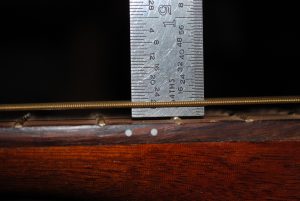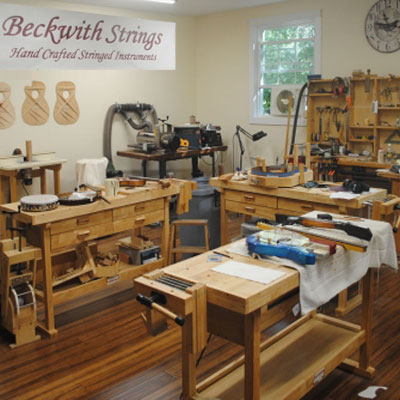A guitar set-up – what is it and why should I care?
In short, it’s the height of the strings above the frets along the entire fingerboard. The string height is a matter of individual preference. When properly set, it can be the difference between a struggle and pleasure when playing your guitar.
This discussion intended to explain a proper set-up and how to accomplish it. It is not intended as a set-up tutorial. Additionally, it is limited to an acoustic guitar set-up but the concepts are the same for an electric guitar.
There are three areas of concern in a guitar set-up: (1) neck relief (straightness of the neck) and the string height at both the (2) lower and (3) upper frets regions of the neck.
Neck relief is the first item to be checked before any other adjustments are made. If needed, a twist of the truss rod will correct any straightness issue. However, don’t try doing this yourself before talking to a guitar tech. Cranking on the truss-rod may seem to work, but using it as a method to set-up a guitar will cause playing problems (buzzing, etc.) further down the road.
In some cases, the neck relief is so far out of alignment, no amount of adjusting the truss rod will correct it and the neck will need a “reset”. Depending on construction of the guitar, this can be an expensive proposition. However, this is fairly rare and is usually only required on older instruments.
Once the neck relief has been checked and adjusted. The next step is to measure the height of the strings from the top of the 12th fret to the bottom of each string. An “average” set-up height is 0.125 (8/64) inches on the low-E string. The remaining five strings are progressively lower.

When I first started building, I set-up my guitars with this specification – expecting it to address all playing styles and then do another adjustment when it was sold if the customer preferred a higher or lower string height. This didn’t last long. To a person, the feedback on my guitars were “great sound, but the action is high”. Soon, I began setting the action of new instruments to 6.5~7/64 of an inch. Now the feedback is they sound great and are easy to play.
Setting the action at the 12th fret is accomplished by lowering (or raising) the height of the saddle. In an acoustic guitar this is done by carefully removing material from the saddle. This is tricky business, in the event too much material is removed, string buzz will occur at the upper frets and a new bridge will have to be fabricated (some techs will “shim” the bridge, but a shim may not transfer string energy to the guitar top as efficiently as solid bone). Once the height at the 12th fret is satisfactory. The action at the lower frets can be adjusted.

First, the string height over the 1st fret is measured. I look for a string height of 0.015 to 0.020 inches from the bottom of the low E string to the top of the 1st fret. The other two bass strings have similar parameters while the three treble strings have a lower height.
If the string height at the 1st fret is to high on a particular string, then the nut slot in which the string sits, needs to be carefully filed down so the string sits lower in the nut. It is to low (the string buzzes when unfretted), then the slot needs to be raised.
Once all adjustments have been made, I perform a final check on the guitar by simply playing it at various neck positions and also checking for buzzing by fretting each string up the neck and return the instrument back to the happy customer.
Keep playing!
-Steve
 Steve Beckwith has handcrafted over one hundred acoustic stringed instruments to address the need of musicians unable to find the exact sound from mass manufacturing instruments.
Steve Beckwith has handcrafted over one hundred acoustic stringed instruments to address the need of musicians unable to find the exact sound from mass manufacturing instruments.
Your shop looks great!I`d like to see it sometime. Good luck.
Thanks John. Let me know when you’d like to stop in!